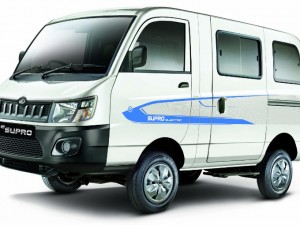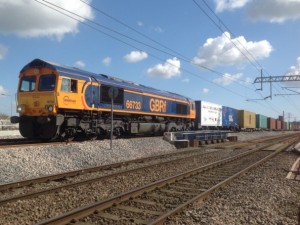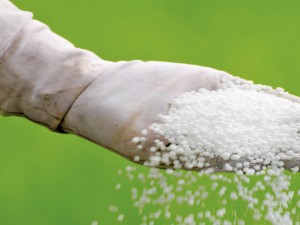Mahindra and Mahindra has launched all-electric cargo and passenger vans under the brand name of ‘eSupro’ to serve primarily the business-to-business (B2B) segment. “The launch will usher in a whole new concept in emission-free cargo transportation and people movement. It will provide much-needed fillip to companies in the B2B and e-commerce segment,” said Pravin Shah, President and Chief (Automotive), Mahindra & Mahindra. The car-maker claimed that on a full charge, the new vehicles can run for up to 112 km, depending on load, and can achieve a top speed of 60 km per hour.
Read More »Government mulls container trains import-export cargo
Concerned over falling exports, the Indian government is planning container trains for import-export cargo. The first step will be to cut down the time taken to move freight traffic. Travelling from Delhi to Mumbai by Rajdhani takes 16 hours but when it comes to a container train, the same journey takes three times longer which increases the cost and makes it uncompetitive. The Delhi-Mumbai freight corridor, once ready, will cut the travel time drastically. But that will take another three years. Studies have shown that it costs almost the same to move goods from Punjab to Jawaharlal Nehru Port Trust (JNPT) and from Mumbai to China. That gives a huge advantage to exports from Thailand or Malaysia, which are not just closer to China but have lower costs. The government is looking at ways to make transport costs much more competitive. A timetable will fix responsibility and ensure that trains don’t remain parked at a station for hours to push passenger trains.
Read More »Rivigo adds 100 new cities for part truck transport
By adding more than 100 cities to its pan India coverage, to meet festive rush, Rivigo has announced a significant expansion of its part-truck load capability – Rivigo Zoom. With Rivigo Zoom, Bangalore to Guwahati can now be connected with a four-day transit; Delhi to Guwahati in less than three days; and Delhi to Bangalore in less than three days as well. The expansion coincides with the company acquiring 1200 trucks from Ashok Leyland to take its fleet size to 2700 by the year end. Deepak Garg, Founder and Chief Executive Officer, Rivigo said, “We are confident that these improved transit times, and the broader network will enable significant enhancement in our customers’ market share through higher customer delight and zero lost orders in the upcoming festival season.”
Read More »First cargo truck from Bangladesh to Delhi disembarks
The first Bangladeshi vehicle weighed down with imported consignment rolled into a customs depot in New Delhi. The truck operated by Expo Freight (EFL) was allowed to cross the border without requiring the trans-shipment of goods from one country’s trucks to another for the first time in the history of trade relations between India and Bangladesh. The truck, carrying cargo for EFL’s clients Marks & Spencer London, left EFL’s warehouse in Tongi, Bangladesh on August 27, 2016. After customs clearing at the Benapole-Petrapole border crossing, the truck crossed more than 1500 km before arriving at its destination in Alipur, Delhi. This achievement was made possible by the BBIN Motor Vehicle Agreement signed in July 2015 between Bangladesh, Bhutan, India and Nepal, allowing for easier passage of cargo and passenger vehicles between the four countries.
Read More »CONCOR and CWCNSL sign MoU to facilitate trade
Container Corporation of India (CONCOR) and Continental Warehousing Corporation (Nhava Sheva) (CWCNSL) have signed an agreement where CONCOR rakes have been provided exclusive access at the three rail connected terminals of CWCNSL at Panipat, Lakhwada and Thimmapur. The synergies between the companies are likely to give a much needed boost to the movement of both exim and domestic containerised cargo by rail in the catchment areas of these three terminals. With this agreement, trade will derive huge benefit from reduced first and last mile connectivity costs as well as from 24×7 access to these terminals. Moreover, the transaction cost of imports and exports is likely to come down once the operations start.
Read More »Freight rates for fertilizers approved
To ensure timely and adequate availability of fertilizers to farmers at affordable prices, Department of Fertilizers has approved the freight rates for the direct road movement of fertilizers up to 500 km from plant/port to block level, as recommended by the Tariff Commission. The decision will ensure availability of urea in remote areas, while keeping the cost under control. It will be one of the major tool to maintain the demand and supply uniformly all over the country up to the block level and will benefit farmers during the peak demand season. Fertilizer companies will not be allowed to do indirect routing of fertilizers which will save subsidy and promote efficient transportation of fertilizers. The district wise normative road freight rates have been computed in scientific manner in line with the policy. Freight for Urea has been always driven by considerations of serving the farming population at large including those in remote and hilly areas. The intention of the government had never been to save subsidy by paying lower than the actual expenditure on freight. Uncertainty of freight subsidy, on the other hand, can disrupt supply and create scarcity amidst plenty. In this, distribution and movement of urea is as important as its manufacture if not more.
Read More »Pushing Road Freight
The report is based on the joint survey of road freight transportation along 28 key routes in India. The aim of the study is to explore new ways to increase the operational efficiency of freight transport by road. This study, henceforth referred to as the 2014-15 survey, was commissioned by TCI to assess the operational efficiency of freight transportation by road in India. This is a follow-up study of the earlier studies, also commissioned by TCI, in 2008-09 and 2011-12, henceforth referred to as the 2008-09 survey and 2011-12 survey, respectively. The other objective was to make an assessment of the operational efficiency of freight transportation by road, and suggest recommendations. The focus of the 2008- 09 survey was on a detailed analysis of the trucking industry and a comparison of roads and railways in terms of freight transportation. As on March 31, 2013, India’s total road length network was 5.23 million km and road density was 1.59 km/sq km. However, the length of national highways/expressways was a meagre 100,087.08 km, or about 2 per cent of the total road length network, even as they carried 40 per cent of the road traffic. Roads and railways carried about 65 and 30 per cent, respectively, of the country’s total freight volume. The rest carried by waterways and airways. In 2011-12, the contribution of the transport sector to India’s GDP was 6.5 per cent, out of which roads and railways accounted for 4.8 and 1 per cent, respectively. Road freight volumes are expected to increase from 1315 BTKM in 2012-13 to 1553 BTKM in 2014-15. However, development of new roads has not been able to keep pace with increasing freight volumes and …
Read More »Govt proposes 15 logistics parks in seven states
The road ministry has shortlisted 15 locations with the highest freight movement for the development of multimodal logistics parks worth Rs 32,853 crore. The locations are in the states of Maharashtra, Punjab, Gujarat, Rajasthan, Tamil Nadu, Karnataka and Telangana. The parks would be spread over a total area of around 4,800 acres and will be built under the first phase of the ministry’s Logistics Efficiency Enhancement Programme (LEEP).
Read More » Cargo Breaking News
Cargo Breaking News







